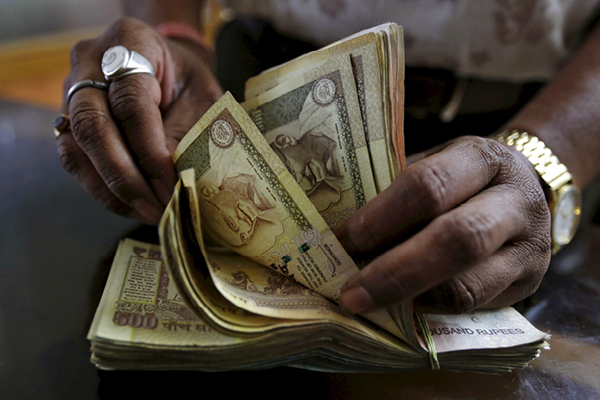
India recently passed a new bankruptcy code that promises tougher action against corporate defaulters. But, as lawyers tell Ranajit Dam, having it implemented quickly and easily might be a challenge. With reporting by Manoj Kumar of Reuters
Skip to
According to the World Bank’s Ease of Doing Business Rankings 2016, India ranks 130 out of 189 economies, about 100 places be-low Slovenia, and nearly 50 places below Guatemala. Reasons behind this range from poor access to credit and difficulties in pay-ing taxes, to the insolvency framework – in that regard, India ranks 136.
But that last part looks set to chance after India’s upper house, the Rajya Sabha, last month passed a new bankruptcy code to take tougher action against corporate defaulters and help banks recover over $120 billion in troubled loans. The country’s Prime Minister Narendra Modi, who just completed two years in office, had promised to introduce the code to address bank debts and improve ease of doing business in Asia’s third largest economy.
India’s efforts to clip the wings of high- profile debtors suffered a setback in March when tycoon Vijay Mallya flew to London as bankers pressed him to repay about $1.4 billion owed by his defunct Kingfisher Airlines. The insolvency and bankruptcy code, earlier passed by the lower house (Lok Sabha), will strengthen hands of lenders to recover outstanding debts by setting a deadline of 180 days for companies to pay or face liquidation.
The World Bank estimates that winding up an ailing company in India typically takes four years, or twice as long as in China and Russia, with an average recovery of 25.7 cents on the dollar, one of the worst rates in emerging markets.
Under the new law, a debtor could be jailed for up to five years for concealing property or defrauding creditors. Bankrupt individuals would be barred from contesting elections as well. “This is something which should put company promoters on guard,” MR Umarji, adviser to the Indian Banks’ Association, said in an interview with Reuters. “They will think twice before committing a default.” He said the bankers could initiate provisions of the law in ongoing default cases once the insolvency court and other required institutions were set up.
Bankers say the courts are usually reluctant to sign “death warrants” against defaulting companies to safeguard jobs, often resulting in delays in winding-up procedures and poor loan recoveries. The new law virtually empowers creditors to decide whether a defaulter is declared insolvent or not, though legally their decision could still be challenged in the higher courts. Currently, over 70,000 liquidation cases are pending in debt recovery tribunals and courts.
Back to topLAWYERS REACT
Legal practitioners in India have praised the new code; “watershed reform” is how Bahram Vakil, senior partner and co-founder of AZB & Partners, describes it. “The code has been hailed as among the most important reforms undertaken in recent times and the Reserve Bank of India called it a defining event that is likely to assist in the resolution of non-performing assets as well as give a fillip to the bond market,” he says. According to Vakil, the code has put in place an entirely new paradigm for the insolvency of corporate debtors as well as individuals and engenders certainty and predictability for all stripes of lenders. “The code puts domestic and international lenders and investors on a level playing field for the first time,” he says. “It requires the resolution of corporate distress within a finite timeframe, failing which the company will be liquidated. In liquidation, the distribution waterfall is entirely new and innovative, with bondholders getting priority over state dues.”
He notes that the code creates new penalties for corporate management in the event of fraudulent trading or defrauding creditors. “It also requires the set up of the institutional infrastructure to achieve the information symmetry between all parties, an efficient tribunal and a nimble regulator,” says Vakil.
Kosturi Ghosh and Ameya Khandge, partners at Trilegal, point out that under the current legal regime, there are multiple laws and adjudicating forums which deal with rehabilitation and revival, bankruptcy and winding up of companies and insolvency of individuals in India. “The code provides a uniform, comprehensive legislation for dealing with insolvency of companies, partnerships and individuals,” they say.
The focus of the code, they note, is to make the insolvency process more “creditor driven.” “Creditors can, under the code, assess the financial viability of a corporate debtor and agree on either a revival process or liquidation of the debtor in an efficient and timely manner,” say Ghosh and Khandge. “Unlike under the current insolvency framework where the corporate debtor struggles for its revival and reorganization and has to thwart claims from various creditors who work at cross-purposes with each other, the code provides a homogenous platform with all creditors on an even footing who come together to decide the best course of action.”
Back to topPOTENTIAL IMPACT
Vakil says that in the near term, the infra-structure will be put in place to support the code. “For instance, the information utilities which are repositories of credit contracts and their terms, with information stored in safe and accessible manner will be up,” he says. “Insolvency professionals who will run insolvency and liquidation processes under the code will be qualified and registered. All this will have an impact beyond good and timely insolvency outcomes.”
Once these have been set up, he expects we expect that insolvency and bankruptcy resolution which presently takes anywhere between four years and several decades will come down significantly. “This will mean that the value recovered will also be significantly higher,” Vakil notes. “In the longer term, we expect this to assist in resolving the burgeoning non-performing assets situation as well as develop alternative sources of credit such as the bond market.”
For Ghosh and Khandge, setting up this infrastructure, including the insolvency regulator, information utilities, insolvency professionals and adjudicating authorities, will not happen overnight. “It would take some time for these machineries to be put in place and we do not expect any major effects in the near term,” they say.
According to them, one of the major pitfalls of the current insolvency regime in India is the unduly long time it takes from the date of payment default by the creditor until distribution of liquidation proceeds. “Coupled with this is the issue of each creditor initiating action in the forum most suitable to it with multiple recovery actions being instituted against the debtor,” say Ghosh and Khandge. “There could be a situation in which the debtor engages in discussions with certain banks for implementing a corporate debt restructuring scheme and at the same time, another secured creditor seeks to enforce his security under another act simultaneous with multiple civil suits being filed by trade creditors for recovery of their dues. It is often the case that in the myriad of proceedings, the asset base of the corporate debtor is completely eroded or the operations come to a stand-still rendering infructuous any attempts at revival, which does not help the creditors, the corporate debtor or the other stakeholders.”
Ghosh and Khandge say that the code, which envisages a structured and time-bound process for insolvency resolution and liquidation, is expected to resolve this and improve debt recovery rates and aid in revival of ailing corporates. “Further, the code is expected to build credibility in the financial system since the decision on revival of the corporate debtor would be taken by the creditor committee with the aid of the insolvency professional – such revival and debt restructuring processes have been known to be scuttled by the promoters and management of the debtor in the past,” they add.
One notable feature of the code, according to them, is the “information utility” model, which has been introduced to ensure information symmetry and avoid reliance on data to be provided by the management of the debtor. “While the idea is to make it easier to identify defaults, disputes cannot be ruled out,” they say. Disputes on the existence of a claim or amount involved is also quite common between operational creditors and debtors and resolution of such disputes could stretch the timelines.”
They add that while code has the promise of easing the bankruptcy process, there are “certain gaps, drawbacks and procedural concerns. Hopefully, the rules will iron out some of these issues.”
India announces new trademark, patent policy amid global pressure
By Manoj Kumar of Reuters
India has announced a new intellectual property policy, speeding up the online registration of patents and trademarks, but resisted pressure from the United States and other Western countries to amend its patent laws.
The policy will make the Department of Industrial Promotion and Policy the agency in charge of regulating intellectual property rights in the country.
Since Prime Minister Narendra Modi took office in 2014, global drug brands led by U.S. companies have been pushing for changes to India’s intellectual property rules.
India’s strained patent and intellectual property administration has failed to keep pace with growing technological advances. Global pharmaceuticals players have often complained about India’s price controls and marketing restrictions.
“We hope it will lead to an interpretation of the Indian Patent Act that respects innovation, encourages research and facilitates effective enforcement mechanisms,” says Ranjana Smetacek, Director General, Organisation of Pharmaceutical Producers of India, a body of multinational drugmakers in India.
Over 237,000 applications are currently pending in India’s four patent offices.
The policy aims to spread awareness among public about trademarks, copyrights and patents to promote innovation within the country, Finance Minister Arun Jaitley told reporters.
The new policy will try to safeguard the interests of rights owners with the wider public interest, while combating infringements of intellectual property rights.
Jaitley said India would retain the right to issue so-called compulsory licenses to its drug firms, under “emergency” conditions, and would not immediately need to change patent laws that were already fully World Trade Organization-compliant.
“Compulsory licences are already provided in our patent law. That existing provision will continue,” Jaitley said after the cabinet approved national IPR policy.
In April, the U.S. Trade Representative kept India, China and Russia on its “Priority Watch List” for inadequate improvement in IPR protection.
India, however, says, it is party to the Trade-Related Aspects of Intellectual Property Rights (TRIPS), a WTO agreement that sets minimum standards for intellectual property regulation.
“It (IPR policy) reiterates India’s commitment to the Doha Development Agenda and the TRIPS agreement,” a government statement said.
Back to top
